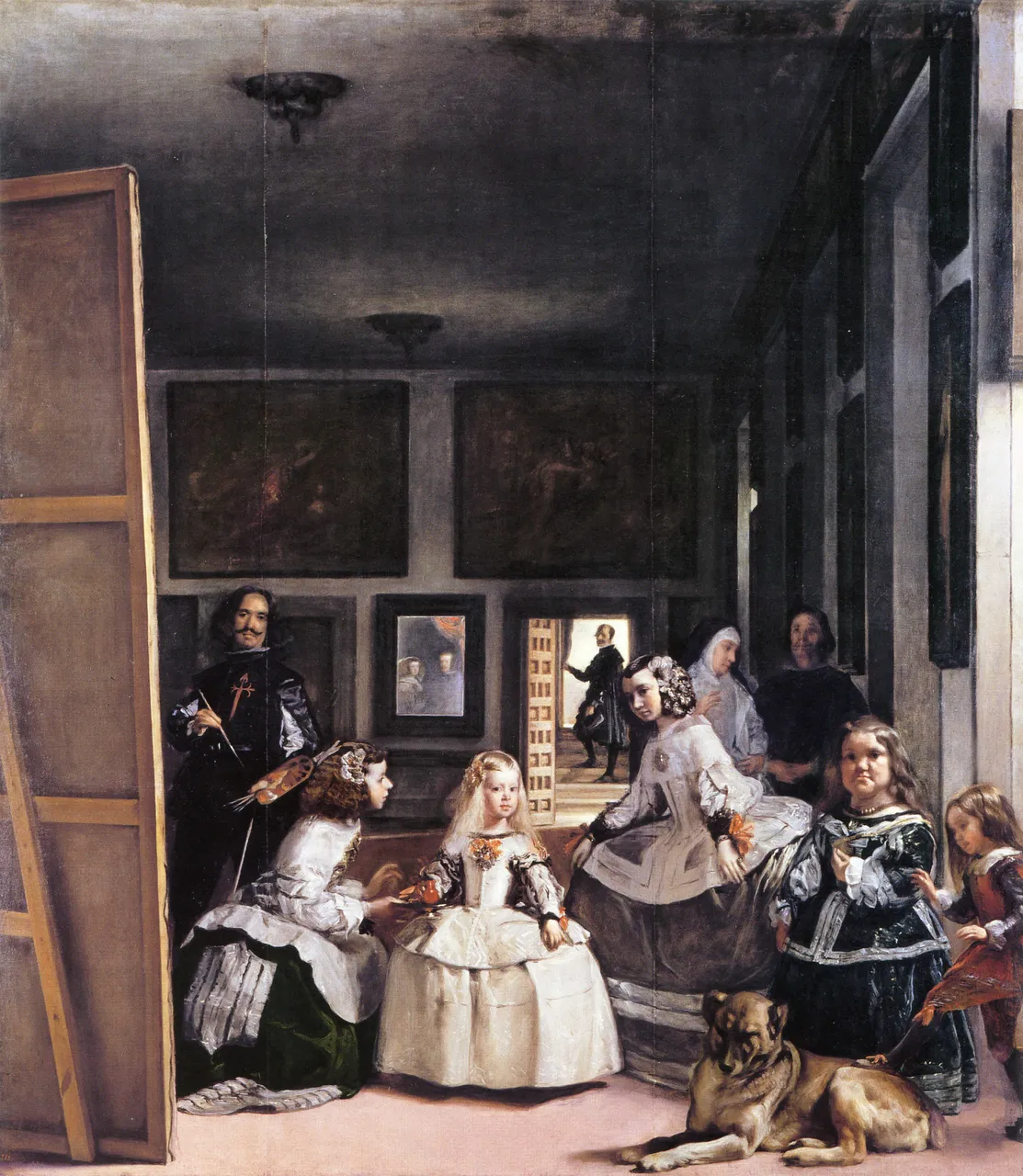Las Meninas.(1656)
Diego Rodríguez de Silva y Velázquez (1599-1660)
Size: 318 cm x 276 cm / 125.2 inch x 108.7 inch
Museo Nacional del Prado. Madrid. Spain.

Las Meninas, Spanish painting masterpiece and one of the most important paintings of universal art, also popularly known as ¨La Familia de Felipe IV,¨ as it represents a daily scene, although of the most important family belonging to the Hispanic monarchy, King Philip IV and his second wife Marian of Austria. The originality of this artwork, or rather one of the major reasons that make it a masterpiece is its way of representing power and its continuity in a simple way. Remarkably, through a scene more than usual and casual, we could say photographic, using a timeless and enveloping perspective of which nobody and nothing escapes.
Las Meninas or "The Maids of Honour of the Infanta Margarita", heiress of the empire, appear as a servile frieze. The Infanta is the absolute protagonist. As a result, she looks like a "star" shedding light and is the light the essential axis of this artwork of great historical importance. That being said, one of Velazquez's achievements is the famous aerial or atmospheric perspective. Therefore, the clarity or lack of it, sieves, clarifies or obscures what we see and perceive. The artist, through the almost hidden windows on the right side of the canvas, manages the light and the shadows, giving space and atmosphere to the scene. Moreover, Velázqez "plays" with the points of light, opening and closing windows. At the picture´s background, there is a character that opens a curtain causing a light source that gives strength and attraction, creating a linear perspective that catches our attention.
Many legends and mysteries surround this masterpiece as well as several technical, scientific and artistic studies of great depth. Some studies suggest that Velazquez is portraying on the great canvas the Spanish kings, arguing that the artist situates them into the spectator´s area and reflect them diffusely in the background mirror. Other specialists advocate that the kings get into the room right at that moment in which Velázquez is carrying out his work, on a large canvas whose image does not show to the viewer which gives great mystery to this masterpiece.
Apart from that, it is relevant to note the fact that Velazquez is included in the picture, as the best possible signature. His presence demonstrates and claims his art, his person and his creative pride. In the same line of thought, Velázquez's genius is reflected in how he portrays the scene, by creating an enveloping perspective and demonstrating that he is capable of painting everything that is around him. Including himself, nothing at all escapes his gaze.